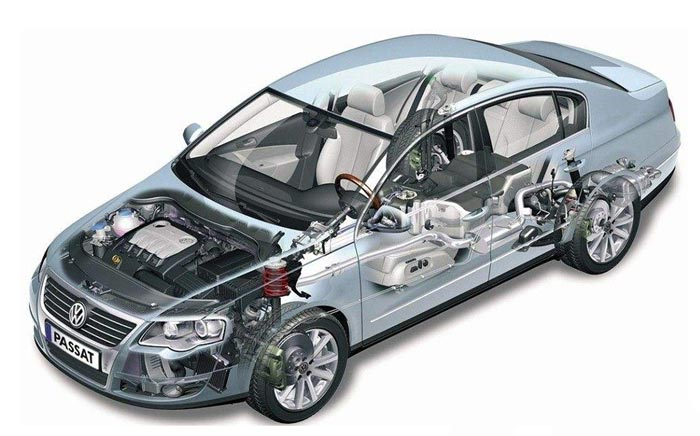
As an important lightweight material for automobiles to replace steel with plastic, FRP/composite materials are closely related to automobile energy saving, environmental protection and safety. The use of glass fiber reinforced plastics/composite materials to manufacture automobile body shells and other related parts is one of the most effective ways to make automobiles lightweight.
Since the world’s first FRP car, the GM Corvette, was successfully manufactured in 1953, FRP/composite materials have become a new force in the automotive industry. The traditional hand lay-up process is only suitable for small-displacement production, and cannot meet the needs of the continuous development of the automotive industry.
Beginning in the 1970s, due to the successful development of SMC materials and the application of mechanized molding technology and in-mold coating technology, the annual growth rate of FRP/composite materials in automotive applications reached 25%, becoming the first in the development of automotive FRP products. A period of rapid development;
By the early 1990s of the 1920s, with the increasing demand for environmental protection, lightweight, and energy saving, thermoplastic composite materials represented by GMT (glass fiber mat reinforced thermoplastic composite material) and LFT (long fiber reinforced thermoplastic composite material) were obtained. It has developed rapidly, and is mainly used in the manufacture of automobile structural parts, with an annual growth rate of 10-15%, setting off a second period of rapid development. As the forefront of new materials, composite materials are gradually replacing metal products and other traditional materials in auto parts, and have achieved more economic and safe effects.
FRP/composite auto parts are mainly divided into three categories: body parts, structural parts and functional parts.
1. Body parts: including body shells, hard roofs, sunroofs, doors, radiator grilles, headlight reflectors, front and rear bumpers, etc., as well as interior parts. This is the main direction of the application of FRP/composite materials in automobiles, mainly to meet the needs of streamlined design and high-quality appearance. At present, the potential for development and application is still huge. Mainly glass fiber reinforced thermosetting plastics. Typical molding processes include: SMC/BMC, RTM and hand lay-up/spray.
2. Structural parts: including front-end brackets, bumper frames, seat frames, floors, etc. The purpose is to improve the design freedom, versatility and integrity of the parts. Mainly use high-strength SMC, GMT, LFT and other materials.
3. Functional parts: Its main feature is that it requires high temperature resistance and oil corrosion resistance, mainly for the engine and its surrounding parts. Such as: engine valve cover, intake manifold, oil pan, air filter cover, gear chamber cover, air baffle, intake pipe guard plate, fan blade, fan air guide ring, heater cover, water tank parts, Outlet shell, water pump turbine, engine sound insulation board, etc. The main process materials are: SMC/BMC, RTM, GMT and glass fiber reinforced nylon.
4. Other related parts: such as CNG cylinders, passenger car and RV sanitary parts, motorcycle parts, highway anti-glare panels and anti-collision pillars, highway isolation piers, commodity inspection car roof cabinets, etc.
Post time: May-07-2021






